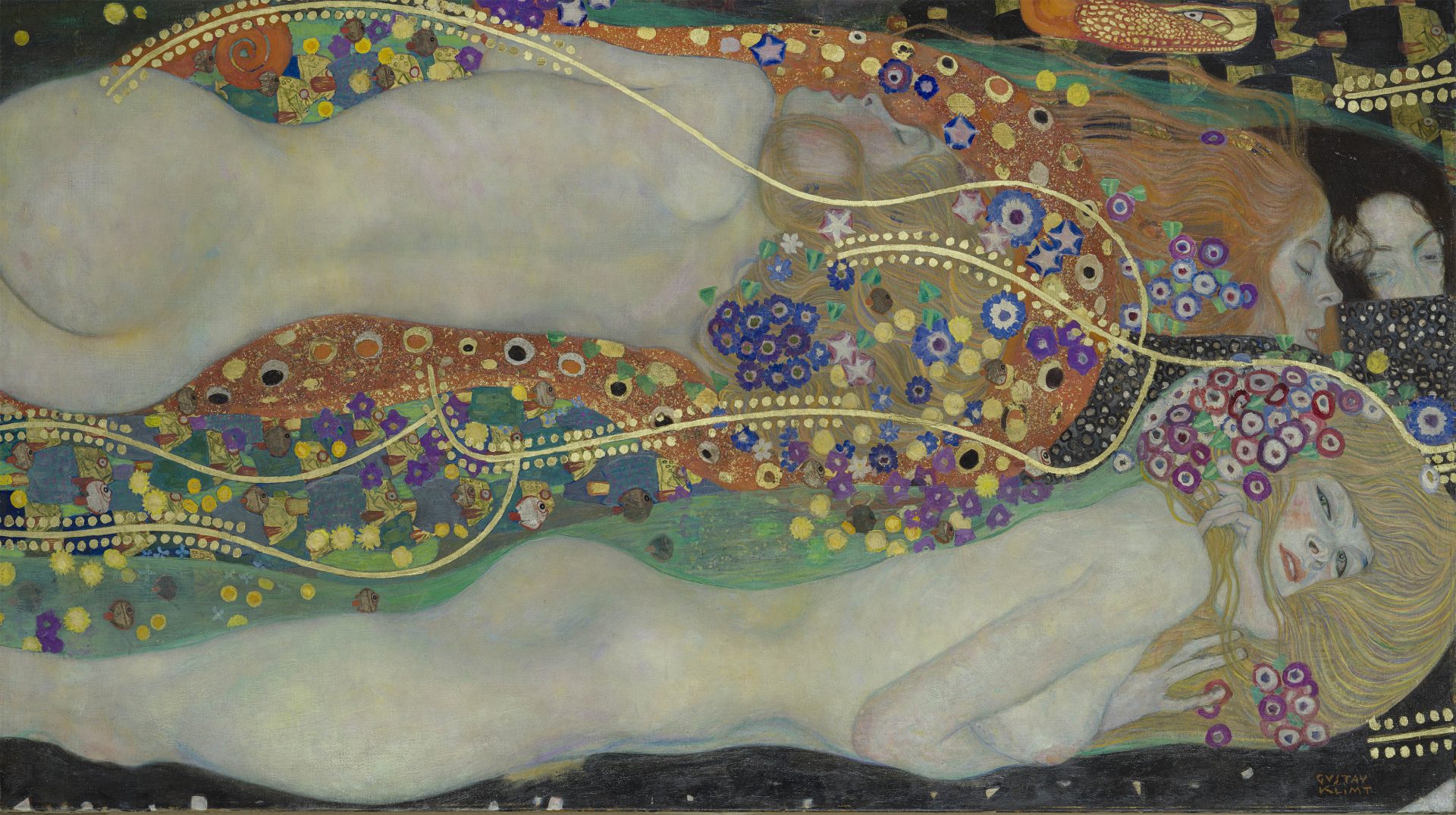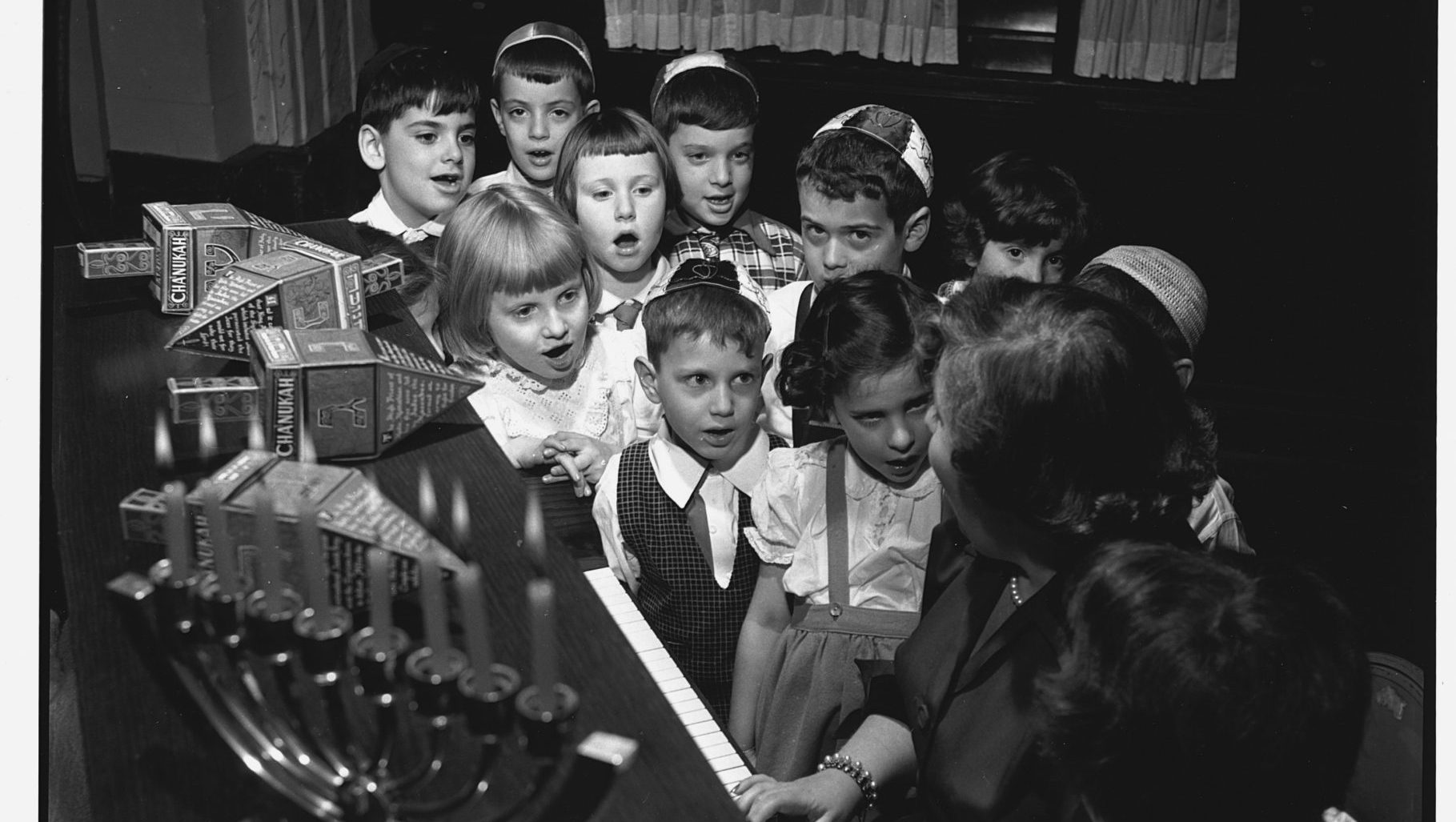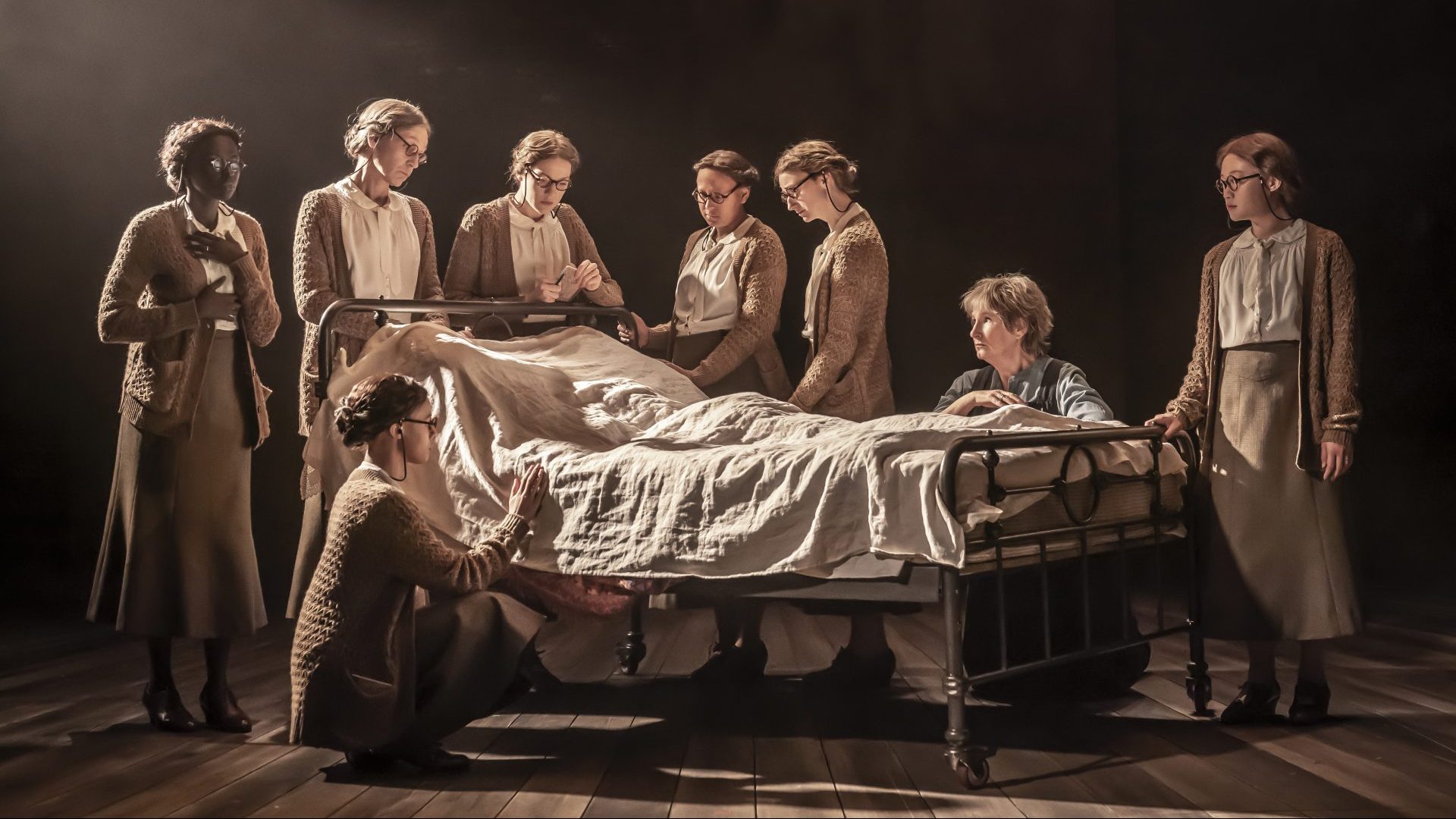Gustav Klimt rarely left his native Vienna. An established and prosperous painter who had helped artists from all over Europe to exhibit in the Austrian capital, his foreign excursions were few. At the age of 47, his visit to the Salon d’Automne in 1909 was his first appearance in Paris. But on the rare occasions when he ventured abroad, what he saw had a profound impact on his ever-evolving style.
In 1899 he attended the Venice Biennale, which showcased the work of Scottish decorative artists Margaret Macdonald Mackintosh and her husband, Charles Rennie Mackintosh. The couple were invited to exhibit in Vienna the following year, and Macdonald Mackintosh’s languid, elongated figures were to inform the optimistic ending of Klimt’s most important work in 1902, his Beethoven Frieze. In it all the arts, including music, vanquish the ills of the world, including the monstrous gorilla Typhoeus, personification of the plague. Klimt’s own female figures form an angelic choir. They are singing in the last movement of Beethoven’s Symphony No 9. They are singing Schiller’s Ode to Joy, later the adopted anthem of the EU.
The occasion of the frieze’s unveiling was an artistic celebration of the life and work of Beethoven, at its centre a monumental sculpture by Max Klinger of the composer, bare-chested and borne god-like above rolling clouds, the figurehead of man’s salvation through art and creativity. Today the sculpture is in the Museum der bildenden Künste in Leipzig. But the
frieze, even though out of public view for more than 80 years after the
exhibition, is still in its original home, the Secession in Vienna, on permanent loan from the Belvedere in Vienna, itself home to Klimt’s most recognised and loved works.
The Beethoven Frieze is recreated in a new exhibition in Amsterdam that illustrates the extent of Klimt’s debt to a series of other artists who were his
contemporaries and back through the centuries, notably to the gilded Byzantine mosaics of Ravenna. From that city in Italy’s Emilia Romagna region he sent a densely written postcard to his lifelong companion, Emilie Flöge, its view of the interior of the Basilica di San Vitale showing the same serried ranks of uniform figures that had peopled the Beethoven Frieze. From this time for a decade or so Klimt’s works became drenched in gold.
The Secession, a white cube gallery built in Friedrichstrasse by Joseph Maria Olbrich, was the physical manifestation of a group of artists of whom Klimt was the most important, who broke away from Vienna’s conventional art group, the Künstlerhaus, in 1897. They founded Secession, and within a year staged the first of dozens of international exhibitions, regular sources of
inspiration for Klimt, who readily absorbed the exhibiting artists’ many moods and techniques.
This chameleon-like facility for emulation was first demonstrated in Klimt’s formative years. Born in 1862, he was the second child of Anna and Ernst Klimt, his father an engraver and goldsmith. At 14 he attended the school of applied arts, the Kunstgewerbeschule, for seven years, his brother Ernst enrolling two years later. But even before the brothers finished their studies, they had begun to paint walls and ceilings to complete the decorative schemes of opulent new buildings on Vienna’s Ringstrasse. The rigour of the school’s training is exemplified by Klimt’s 1890 portrait of the pianist and composer Josef Pembaur, with an attention to detail that today would be termed photorealism. Only the whimsical ornamentation of the frame that the artist made himself gives any clue that this is the work of Klimt.
At this stage, his primary influence was Hans Makart, most familiar to gallery-goers today for his highly decorative grand stairway at Vienna’s Kunsthistorisches Museum. Unlike Klimt, Makart had travelled widely, and so, in observing Makart’s style, Klimt was also observing the influence of masters such as Delacroix. When Makart died suddenly in 1884, the brothers picked up and completed the unfinished museum project and other schemes already entrusted to Makart.
A highly fashionable artist then on the international scene was the Dutch-born Lawrence Alma-Tadema, whose neo-classical scenes Klimt essayed too. Young women lavishly dressed as allegorical or mythological figures – or carelessly undressed – disport themselves in grand surroundings, unconscious of the onlooker.
With election to the Künstlerhaus in 1891, Klimt became both part of the establishment and one of the younger members destined to break away, as they did in 1897.
The rebels’ first Secession exhibition in 1898 featured 131 foreign artists alongside only 23 from Vienna. Among the foreigners were the American-born portraitist John Singer Sargent. Also exhibiting was James Abbott McNeill Whistler, the widely travelled artist of American parentage. Important portraits by both men were to influence Klimt. In Sargent’s case, it was his full-length of “Madame X” – Madame Gautreau – that seems to have informed Klimt’s Portrait of a Lady, with her similar colouring and
confident pose.
While Edgar Degas loaned a Whistler portrait to the debut exhibition, a falling-out between the artist and his patrons stymied other loans. But comparisons would be drawn in the coming years between Whistler’s and Klimt’s portraits, especially their bleached tonality and decorative detail. Particularly striking is the similarity between Whistler’s Harmony in White and Blue (1872-74) and Klimt’s Portrait of Hermione Gallia (1903-04). The direct gaze, the clasped hands, the chalky white gown, chequered floor and unworked background are common to both.
Decoration came spectacularly to the fore as the Beethoven Frieze heralded Klimt’s literally golden period – the years when what are today his best-loved works shimmered with gold leaf. But while the gilding is his signature, yet another artist is in the background, this time the Dutch-Indonesian artist Jan Toorop. Toorop’s etiolated, hollow-eyed figures slithering and writhing across his fevered scenes are echoed in Klimt’s fantastical clusters, notably in a picture not seen for nearly 60 years.
Water Serpents II, painted in 1904 and reworked in later years like many pieces, has all the elements that distinguish Klimt’s golden years: clusters of flattened flower motifs in red, purple and blue, egg-like motifs with black and orange “yolks”, stars, and gold braids curving through the composition and heading out of the picture.
The four water serpents are women, two blonde, one redhead, one brunette, who flow like liquid across the canvas, their creamy white flesh contrasting with the bold colours of their richly decorated surroundings. At one time stolen by the Nazis, it has changed hands several times, most recently in 2015 for a record sum. It is one of several works from private collections on rare public display in the exhibition.
A lesser artist hitting the jackpot in the golden years might have been tempted to repeat the formula, but Klimt was moving on, still travelling little, but increasingly engaged with the natural world, inspired by holidays outside Vienna. He had succeeded spectacularly with colour as ornament, and now he investigated its properties in landscape painting. He would have seen examples of pointillism, as practised by Georges Seurat and the then more famous Belgian Théo Van Rysselberghe, who in a Saint Tropez view offered a woodland floor made up entirely of purples, greens and pinks.
But perhaps the most unexpected alliance, and one that has helped inspire this exhibition, is that between Klimt and Vincent van Gogh.
While at first glance there seems to be little in common between the well-connected Viennese urbanite at the hub of a great artistic interchange in the Secession exhibitions and the unfashionable Dutch artist breaking new ground in a solitary country life, Klimt would have seen Van Gogh’s work after his early death in 1890, notably in the exhibition Die Neue Künst in 1913, which featured work by Van Gogh and Cézanne as well as the up-and-coming young artist Pablo Picasso.
Klimt’s Italian Garden Landscape that year resembles Van Gogh’s Daubigny’s Garden, both men cultivating fat brushstrokes and rainbow colours, and propelling the viewer through abundant nature to suggested buildings beyond.
Klimt took his experiments with colour back to the studio. Gone at last were the china-doll complexions. In Portrait of Johanna Staude, skin tones are created with Matisse-like observation, bright blues and yellows among the pinks and whites.
One of his last works, with its insight into character and feeling for fabric, it is a distillation of all that Klimt had imbued in a short lifetime. In 1918 he suffered a stroke, contracted pneumonia during recovery, and died on February 6 aged 55.
He did not live to see abstraction, then in its infancy, reach its full potential. Had he done so, who knows where his twin gifts for invention and emulation might have taken him.
Golden Boy Klimt: Inspired by Van Gogh, Rodin, Matisse… is at the Van Gogh Museum, Amsterdam, until January 8; and at the Belvedere, Vienna, until May 29. Claudia Pritchard is a freelance journalist who writes about the visual arts, opera and classical music




